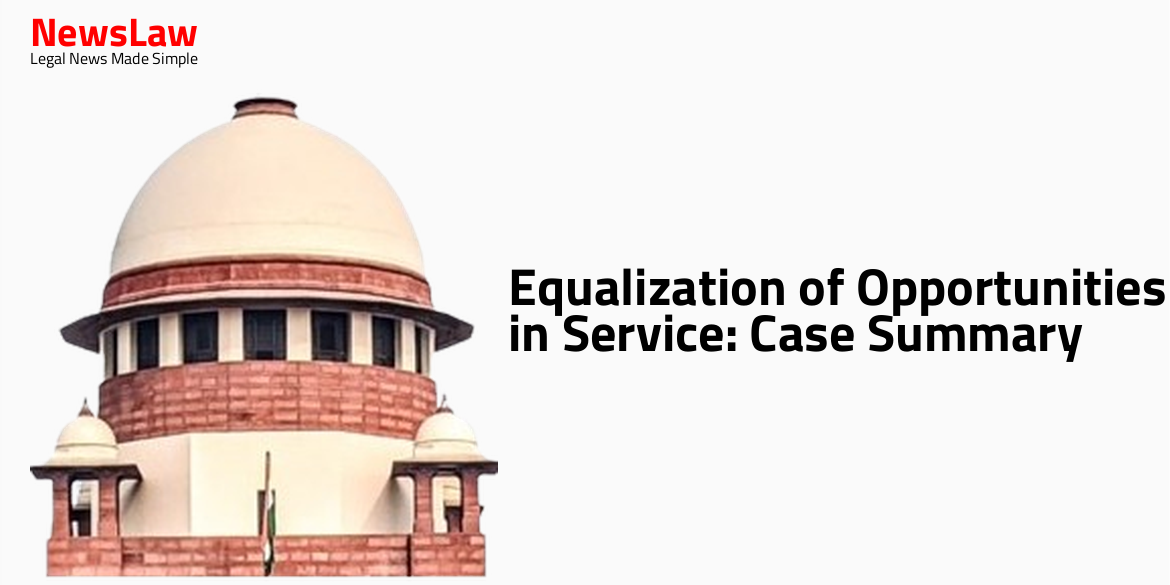The interpretation of Section 60(6) of the IBC in the context of a corporate debtor’s moratorium period is a central focus of this legal case summary. Highlighting the importance of statutory interpretation, the analysis delves into how the exclusion of the moratorium period impacts limitation periods for suits or applications by a corporate debtor. The court’s detailed legal analysis sheds light on the complexities of interpreting statutes in their entirety, emphasizing the need to consider the text, context, and purpose of the law. Stay tuned to grasp the nuances of the court’s reasoning in this significant case.
Facts
- Respondent approached High Court of Delhi for hearing and representation consideration after appellant rejected representation.
- NCLT approved resolution plan but appellant issued termination notice to respondent for alleged inaction.
- Respondent invoked arbitration provision after appellant rejected representation.
- Respondent filed application under Section 11(6) of the 1996 Act.
- Impugned order proposed arbitration through DIAC.
- NCLT Mumbai admitted application under Section 10 of IBC and declared moratorium.
- High Court of Delhi allowed application under Section 11(6) and appointed former Chief Justice as arbitrator.
Also Read: Legal Analysis of Assignment and Ratification in Property Law
Arguments
- Learned senior counsel for the appellant argues that the appellant is disabled from establishing its case before the arbitrator due to the respondent’s delay in bringing the application for appointment of an arbitrator within the period of limitation.
- The counsel contends that Section 60(6) of the IBC should not be relied upon by the respondent and that the exclusion of the period of limitation in Section 60(6) does not apply in the present case.
- It is highlighted that the moratorium under IBC does not prevent a corporate debtor from launching a legal proceeding, and the aspect of limitation is crucial as it pertains to jurisdiction.
- Reference is made to Section 3 of the Limitation Act, 1963, to support the argument that the application under Section 11(6) was beyond the permissible time.
- The exclusion of time for suits or proceedings by the corporate debtor is distinguished from the exclusion of time against the debtor under Section 60(6) of the IBC.
- The learned senior counsel further emphasizes that the policy underlying the law of limitation is to prevent long dormant claims from being entertained.
- The report of the Joint Committee on the Insolvency and Bankruptcy Code 2015 is cited to argue that the exclusion of the moratorium period from the calculation of the limitation period applies only in specific contexts.
- The duty of the court to dismiss suits or applications barred by limitation even in the absence of a plea is underscored.
- Principles of reasonable diligence in bringing actions and the importance of balancing public interests are highlighted in the arguments.
- The conduct of the appellant as a public authority is questioned, and the argument made for an interpretation that considers both public interest and the financial benefits of corporate debtors.
- The respondent agreed to arbitration but insisted on DIAC as the arbitration platform.
- The exclusion under Section 60(6) was always in favor of the corporate debtors.
- The ambiguity was raised regarding the exclusion applying to suits by creditors against the company during the moratorium.
Also Read: Interpretation of Custody in Contempt of Court Case
Analysis
- The analysis delves into the interpretation of Section 60(6) of the IBC in the context of a corporate debtor’s moratorium period.
- It emphasizes that the period of Moratorium under Section 14 is excluded in computing the period of limitation for suits or applications by a corporate debtor.
- The argument of literal interpretation versus contextual interpretation is explored, highlighting the necessity to view statutes in their entirety.
- The continuity of the corporate body during the management transition from resolution professional to previous management is discussed.
- The significance of exclusion of the Moratorium period in computing limitations is reiterated, noting its impact on various legal proceedings.
- The importance of examining the text, context, and purpose of the law in statutory interpretation is underscored.
- The moratorium period shall not terminate, suspend, or interrupt specified transactions.
- Central Government, in consultation with financial regulators, may notify transactions exempt from the moratorium.
- The moratorium order is effective from the date of issuance until the completion of the corporate insolvency resolution process.
- If the resolution plan is approved or liquidation order passed during the insolvency process, the moratorium ceases to have effect.
- The period of moratorium is excluded from the computation of the limitation period for any suit or application against a corporate debtor.
- The Adjudicating Authority for corporate persons, including personal guarantors, is the National Company Law Tribunal.
- Clause 79(14)(e) is omitted as it is contrary to clause 60(1) regarding moratorium exclusion.
- Interpreting statutes requires an objective approach, where the interpreter assumes the legislature consists of reasonable people seeking reasonable goals in a reasonable manner.
- It is important to presume that members of the legislative body acted in good faith to fulfill their constitutional duties.
- The interpreter should focus on the intent the author would have had if they acted reasonably, rather than the subjective intent of the author.
- The application of Heydon’s Rule should not be taken to extremes, and loyalty to the rule does not mandate a construction leading to absurd results.
- Courts should strive to apply ‘the golden rule’ of construction, reading statutory language in its ordinary sense without omission or addition, to avoid injustice, absurdity, or contradiction. However, language may be modified when necessary to prevent disadvantages.
- An interpretation that furthers the object and purpose of the law should weigh significantly in the Court’s deliberations.
- The golden rule of interpretation involves understanding the words of a statute in their natural and ordinary sense, without artificially confining their effect to specific identified issues.
- If the language of a statute leads to manifest contradiction, inconvenience, absurdity, hardship, or injustice, a construction may be applied to modify the meaning of the words to avoid such outcomes.
- Purposive construction involves placing the court in the position of a reasonable legislator/author to interpret a statute in a reasonable manner, ensuring the object of the Act is fulfilled to uphold constitutional obligations.
- Literal interpretation of the Act should be avoided if it may lead to anomalies or absurdities.
- The appellant’s interpretation goes against the plain meaning of the words used in the statute.
- The words ‘any suit or application’ and ‘by a corporate debtor’ must be considered in conjunction with Section 60(6) of the IBC 23.
- Interpreting the statute as the appellant suggests would deny the benefit of extending the period of limitation to the corporate debtor.
- The court cannot question the wisdom of the Law Giver and must interpret the statute accordingly.
- Section 60(6) of the IBC 23 does exclude the entire period of the moratorium for the corporate debtor in relevant proceedings.
- Given this interpretation, the question of the appellant being debarred from raising the plea of limitation due to consenting to the arbitrator appointment is unnecessary.
- The period of limitation is governed by the Limitation Act, which contemplates exclusion of the period during which a moratorium is in force.
Also Read: NGT Jurisdiction and High Courts’ Role
Decision
- The appeal will stand dismissed in terms of the signed reportable judgment.
- The appeal will stand dismissed.
- There will be no orders as to costs.
Case Title: NEW DELHI MUNICIPAL COUNCIL Vs. MINOSHA INDIA LIMITED (2022 INSC 486)
Case Number: C.A. No.-003470-003470 / 2022



